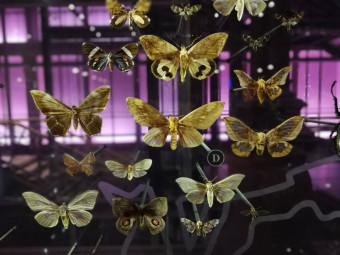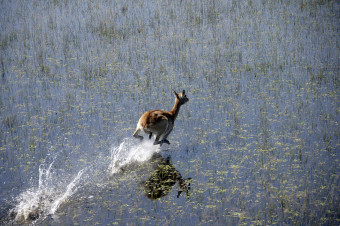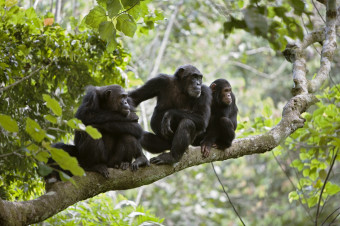The term “biodiversity”, short for biological diversity, means the variety of all living things and the living systems of which they are a part. This encompasses more than wild flora and fauna. It includes all living species and the living communities they create.
There are three main levels of biodiversity; it includes the variation between species, the diversity of individuals within a species (their genetic variability) and the variety of different habitats and ecosystems which these species create and inhabit. A fourth level of biodiversity can also be recognised - the landscape level, referring to the diverse complexes of natural landscape patterns which habitats and ecosystems help to create. Human beings are also a part of biodiversity, as are the various man-made habitats which exist in agroecosystems and urban landscapes, and our crops, livestock and other domesticated species.
Biodiversity provides the essential building blocks of ecosystems. The word “ecosystem” describes an assemblage of living communities and their dynamic interaction with the physical (non-living) environment of the air, water, rocks and soils. Healthy ecosystems contribute many benefits to people, widely known as ecosystem services, upon which many aspects of our livelihoods and general well-being depend, not least our health.
Ecosystems are dynamic and in constant flux, affected by geology, climate, geography and the actions of various living organisms, and by human activities. In an ideal situation, an ecosystem is in relative balance, meaning that the flow of energy and materials into, within and out of the ecosystem is in equilibrium. In reality, ecosystems experience a range of pressures, both natural and human-made, which can affect their various components and how they function. A healthy ecosystem can resist major impacts by such outside pressures, or show resilience in that normal ecosystem processes and populations can recover over time. Such attributes of resistance and resilience are dependent upon biodiversity. This is often referred to as ecosystem integrity, ecosystem stability, or ecosystem health.
Over the past century, the exploitation of the world’s biodiversity and ecosystem services has led to immense improvements to human prosperity and well-being, extending lives and improving livelihoods for millions of people. However, as reported in 2005 by the Millennium Ecosystem Assessment - a UN-led stock-take of the status and trends of Earth’s major ecosystems and the related implications for human well-being - those benefits have not been distributed equitably across society, and the exploitation has occurred at an unsustainable scale and pace. Despite many efforts to address the findings of this assessment, the situation has generally worsened in subsequent years.
Globally, biodiversity is declining at a greater rate than at any other time in human history. The major causes of biodiversity loss include habitat loss, pollution, the spread of invasive alien species, climate change, over-exploitation and changes in human demographics. This decline means that the ability of ecosystems to meet the needs of society can no longer be taken for granted. Many negative impacts on human well-being are already being felt all over the world, including impacts on livelihoods and increased risks to health.
Several multi-lateral agreements have been adopted at global and regional levels to promote the conservation and sustainable use of biodiversity and the benefits it provides to human well-being. The broadest and most important of these is the Convention on Biological Diversity (CBD) under the United Nations. Others address specific ecosystems which are of particular importance or vulnerability - including the Ramsar Convention on Wetlands, and the High Seas Treaty; or target specific aspects of biodiversity - such as the International Treaty on Plant Genetic Resources for Food and Agriculture, and the Convention on Migratory Species; or seek to directly regulate human activities, such as trade, which may pose a specific risk to biodiversity; such as the Convention on International Trade in Endangered Species and the European Union Regulation on Deforestation-Free Products.
Whilst these agreements have had some important successes in slowing and in some cases halting the loss of biodiversity in some ecosystems or for certain species, biodiversity continues to decline on all continents at a scale and pace that threatens planetary health and human well-being. They key challenges are public awareness and engagement, political will at local, national and global levels, and building effective partnerships across sectors and communities.




